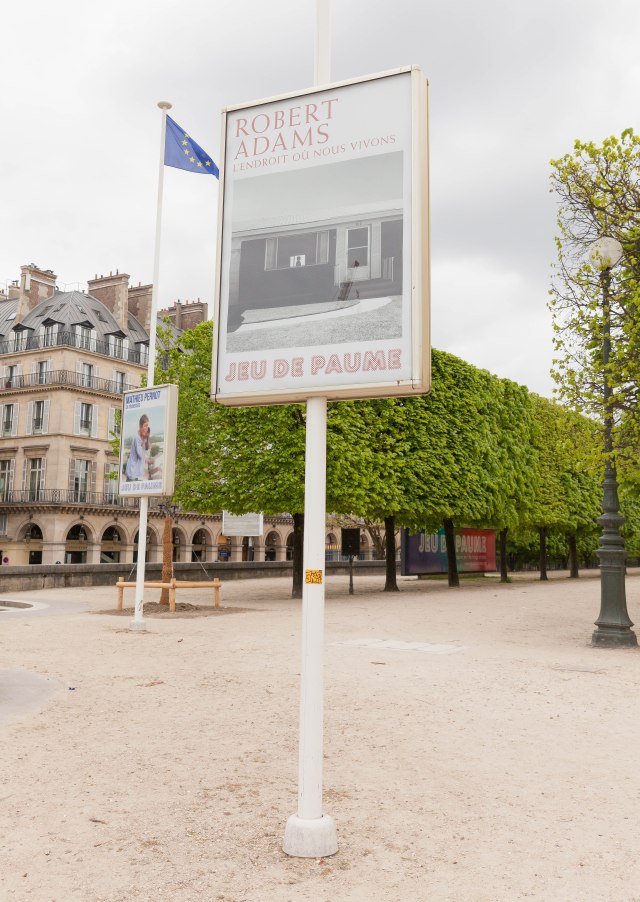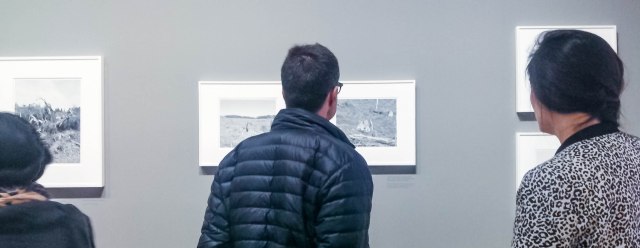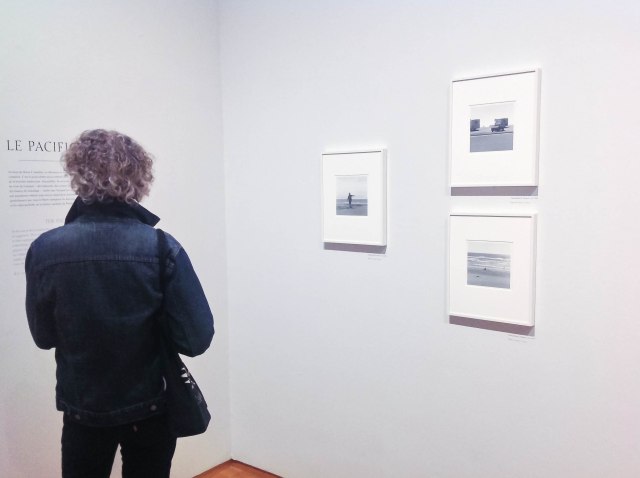The place where we live is a major retrospective exhibition by the American photographer, Robert Adams; it covers more than 40 years of work. For Adams, there is “a beauty that endures despite our trobled relationship with the natural world, and with ourselves.”
What I like, what I really really like about Adams, is his ability to make a black and white print! Perhaps the appreciation of such work is an acquired taste; for anyone who has acquired the taste, these images are little short of masterpieces. As for writing, I am not sure I agree with Adams. A recent quote from Alain de Botton’s “Architecture of Happiness” is ” What can I believe where? This is the issue that drives every artist – to make a place where you can believe important things.” I find it necessary to read well between the lines to comprehend this statement.
Adams seems to be expressing his view through words as well as images and echoes Christian sentiments; the following is from his introduction to the book, What can we believe where? … “I began making pictures because I wanted to record what supports hope; the untranslatable mystery and beauty of the world.”
Text in this book is limited to the first page and a few more at the back giving captions; the rest is pictures.
What I also like about Adams’ work is that it is contemplative; there is a peaceful feel to much of it even though there may be some kind of disturbance in the images such as a crashing wave.
The work of Adams who is now approaching eighty years old might be considered rather dated; he speaks from a world that knew black and white as the medium. His prints however are beautiful and he manages to allow that quality to seep into his work so that we are also able to look at what is banal and understand that it too will pass.
Some chat with Eileen who has arranged this trip to Paris and this exhibition in particular. We both enjoy the work of Adams which contains beauty and that other aspect of the Sublime, the darker side that I jokingly refer to as awesome. I have another discussion about the Awesome with Francis, the French photographer accompanying us; here we joke a little about the American word that can be applied to the taste of a beef burger as well as a landscape.
Eileen later says she does not like digital black and white because one is cheating in a way; if one is visualising in colour and using a colour sensor then it can’t be black and white! This leads to a more general discussion about black and white in the digital age. I for one, feel she is taking a rather simplistic view which she does not deny as if she is making a stance for the purposes of discussion.
One sees images here that do not conform to the modernist view of photography which tends to emphasise deep blacks with a dynamic contrast; the work of Adams is perhaps more post-modernist in consisting much more of grey tones with more subtle tonal distinctions.
The first room of the exhibition contains work from The Plains of the Western United States; this also includes a series called Eden. I could continue to write about Adams’ mastery of the black and white medium, he certainly seems to be playing with it in his carefully framed and exposed pictures, but this might too easily become boorish particularly to those who are not familiar with the medium itself. One also needs to consider content in contextual terms.
Adams is not just photographing the landscape of wilderness, he is also concerned with what is happening within it. In this his work recalls that of medieval painting where landscape took a back seat being there primarily to add a sense of reality to the scenes being depicted. Similarity, with Adams, we see perhaps a modern building around which pristine landscape exists; here the point is not so much the building rather the scar it creates against the background. This dichotomy which might be understood in terms of Barthes’ studium and punctum, is often what these photographs are about.
In “South of the Rocky Flats Nuclear Weapons Plant, Jefferson County, Colorado, 1977” we at first see an appealing landscape, even if it may not be a very inviting one owing to it’s arid nature. Then we spot a road, see there are cars upon it while the caption informs us of the serious nature that this image is drawing our attention to. This photograph appears on the cover of his book, “From the Missouri West”.
Some other images such as “Boulder County, Colorado, 1975” has only a road moving through the centre of a landscape to point out Adams’ recurring dichotomy, the conflict between nature and man.
In “Weld County, Colorado, 1994” we see a few trees standing amidst grassland; here might be a simple image of the beautiful yet it is part of a series about a small area of countryside being redeveloped.
Adams has produced a lot of books. Some are of images, others of text that discuss photographic themes such as “Beauty in Photography”. In the galleries of the exhibition, these books are shown behind glass in tables at the centre of the rooms.
Adams does portraiture as one might expect. Here location plays an important part, at least it does in the images on show here. An exception to this is the series called “Bodhisattva” in which he makes close ups of a Buddha head. Here the framing is important as is the texture and the almost landscape effect of the facial areas as if the features are like marks in the landscape. The main collection of portrait images is called, “Our parents, Our children” about which Adams writes “We come upon innocence, beauty, caring, joy, or courage, even in lost places, are we not obliged to acknowledge them in defiance of ironists?”
His work does have a contemplative feel particularly in the sea photographs which make up some of his later work. Here the dichotomy inherent to so much of Admas’ work is less distinct; there is the sea and possibly the shore yet it may just be a matter of rolling sea and sunlight.
Does one buy the catalogue? The cost here is considerable at almost Euro 150 yet what is the reproduction like!? The answer is that Steidl have done an excellent job but an original print which is to say one made on photographic paper and processed chemically has a certain edge that a mass reproduced book image does not. “Time Passes” is another book, a catalogue of his show at the Foundation Cartier-Bresson in 2007 which also can be bought in the shop here at the Jeu De Paume.






